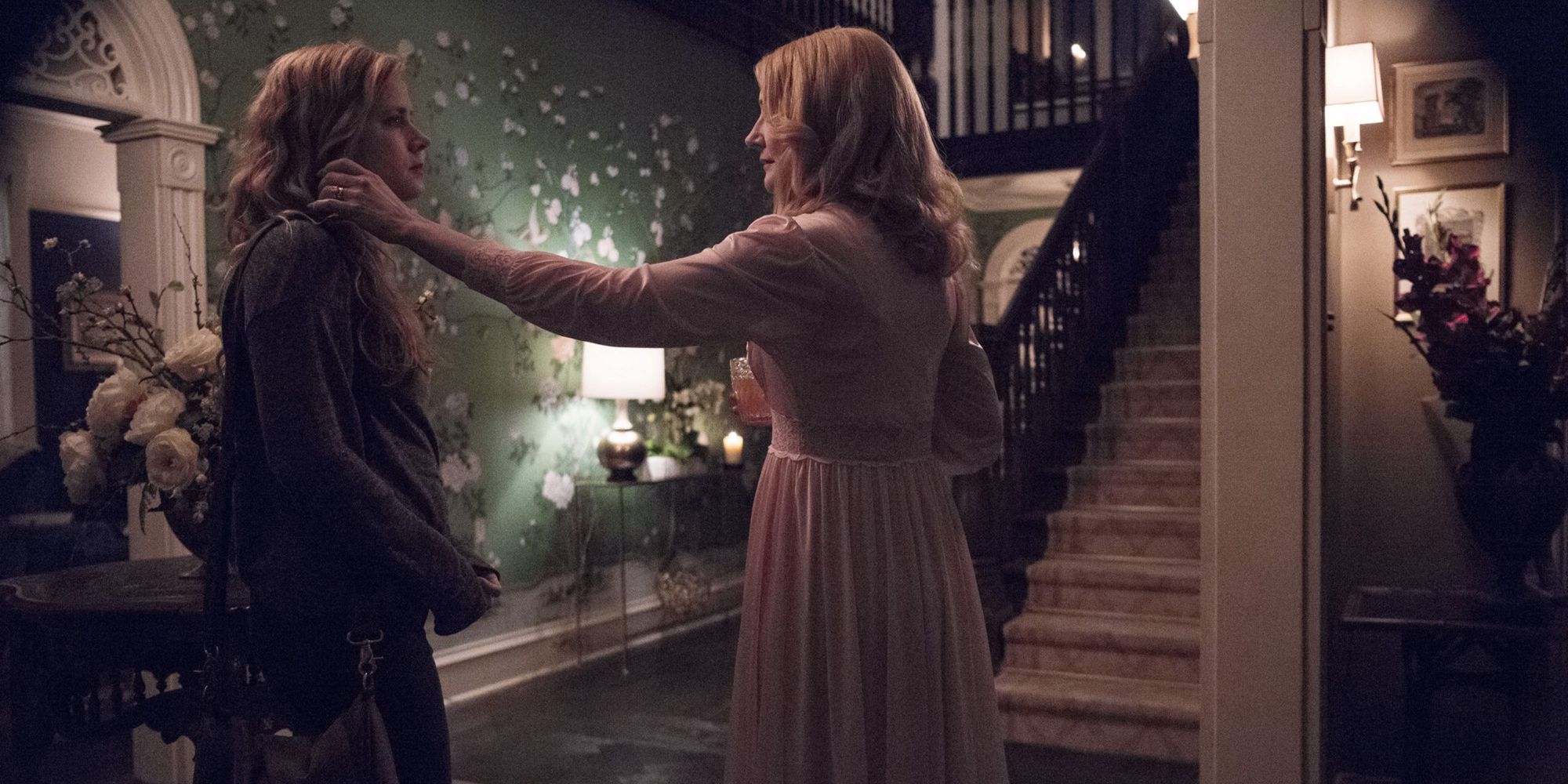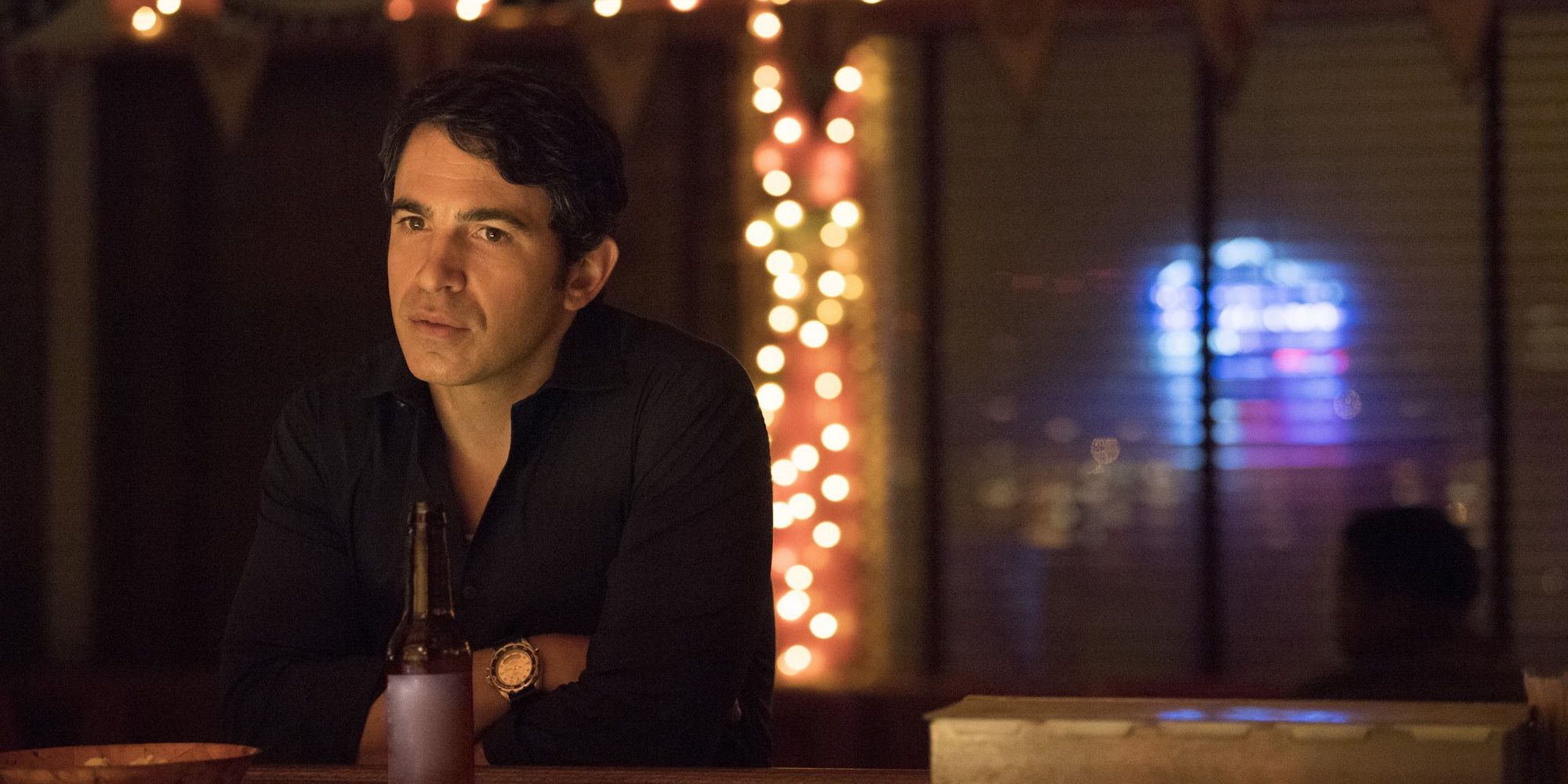From its first moments, HBO’s summer event series, Sharp Objects, exudes a potent sense of unease. The sight of two young girls wheeling down a country road on roller skates quickly shifts from the conventional sun-soaked idyll of pre-teen summer days to something strange and unsettling, invasive actually. It’s a glimpse into the past of Camille Preaker (Amy Adams), of simpler days gone by, and it comes creeping into the present, a familiar but unwanted guest with designs on doing harm.
Once grasped, it’s a notion the series never lets go of. Throughout the eight-episode event, history collides with the show’s here and now as a matter of procedure. It’s sometimes subtle, a flicker of an edit brings past and present crashing together, but more often than not it’s made to be as disconcerting as possible: a well-framed pool of blood or the sinister smile of a boy with a gun. The series has a seemingly inexhaustible supply of images you probably don’t want to look at but can’t avert your eyes from, either. It lends the grim observation of Sharp Objects’ toxic legacies an eerie, dreamlike tenor that accentuates the squalid nature of its story and its setting, and offsets the narrative’s small-town thriller tendencies with potent, often unpleasant cultural examinations.
More: Somebody Feed Phil Season 2 Review: It’s All About The Food, For Better & Worse
The series is adapted from Gillian Flynn’s taut debut novel of the same name, from former Buffy the Vampire Slayer and current Dietland showrunner, Marti Noxon (Flynn is credited with writing several episodes), and Jean-Marc Vallée (Big Little Lies) as the director of all eight installments. The result is a compelling limited series that’s prone to languid stretches without becoming listless, and is elevated by a wealth of onscreen talent like Chris Messina as Kanas City detective Richard Willis, and Matt Craven as Vickery, the fictional town of Wind Gap’s police chief. Then there’s the always welcome Elizabeth Perkins as the medicated, slightly pickled pot-stirrer Jackie, Miguel Sandoval as Frank Curry, Camille’s editor at the St. Louis newspaper where she’s a reporter, and Eliza Scanlin as Amma Crellin, Camille’s unruly, always-scheming stepsister.

But it’s the one-two punch of Adams and Patricia Clarkson, who plays Camille’s mother Adora Crellin, that makes the series tick. Sharp Objects runs largely the wattage of these two performances, taking time to luxuriate in Adora’s brilliantly exaggerated manipulativeness as much as it slowly ascribes painful meaning to the words carved into Camille’s flesh. The strained relationship between mother and daughter is partly why Camille’s return home is so difficult for her, but it’s only part of what makes Wind Gap such a noxious place.
As restrained and understated as Adams is, Clarkson shows a different kind of restraint, one that’s shared in equal measure by the series itself. Though both flirt with tipping over into trashy, Southern Gothic melodrama, they never do. The show is tethered by the unique collision of the past and the present, whereas Clarkson turns her character’s immense power, privilege, and resultant wretchedness (particularly to her children and passive husband played by Henry Czerny) into something that gets at the heart of what’s rotten in Wind Gap, and why this woman’s matriarchal grip — she inherited a hog farm that’s the main source of employment in town — is more stranglehold than maternal embrace. Whether she’s lambasting her daughter for her late night activities or insisting shoes be removed before anyone walks on a floor made from elephant tusks, Adora routinely careens toward caricature, but Clarkson can be relied upon to pump the brakes and steer her performance toward something more interesting and sinister.

The deliberate pace of Sharp Objects and its unique past- and present-tense structure withholds as much as it reveals. The mostly silent flashbacks of Camille’s childhood or her time in an institution underline the specificity of her personal experiences as well as the cumulative effect any time spent in Wind Gap has on its population — temporary or otherwise. The urge to flee this humid environ, a place that toasts its racist, rape-filled history with a drunken, daylong celebration, is likely to be as strong for those watching at home as it is for Camille and Det. Willis. But the lure of uncovering the truth of Camille’s past, as well as the identity of the person responsible for hunting down and murdering teenage girls is too powerful, and so characters and audience alike are tempted to see it through until the very end.
The dual mysteries drive the plot (even more so in the second half), but for all its steamy pot-boiler disposition, Sharp Objects shows a greater inclination toward savoring the small details of its characters and its setting. Wind Gap is such a strange, unsettling place — stuck in the past and proud of it — it’s no wonder Noxon and Vallée feel inclined to wallow dreamily in it. The result is a measured, satisfyingly grim trek through a damaged place filled with people who are damaged in equal measure but reveal it in different ways. Some, like Camille, wear that damage on their bodies, while in others it festers in some deeper place. It’s a place Sharp Objects is all too willing to go.
Next: 12 Monkeys Series Finale Review: The Beginning Is Finally Here
Sharp Objects continues next Sunday with ‘Dirt’ @9pm on HBO.




